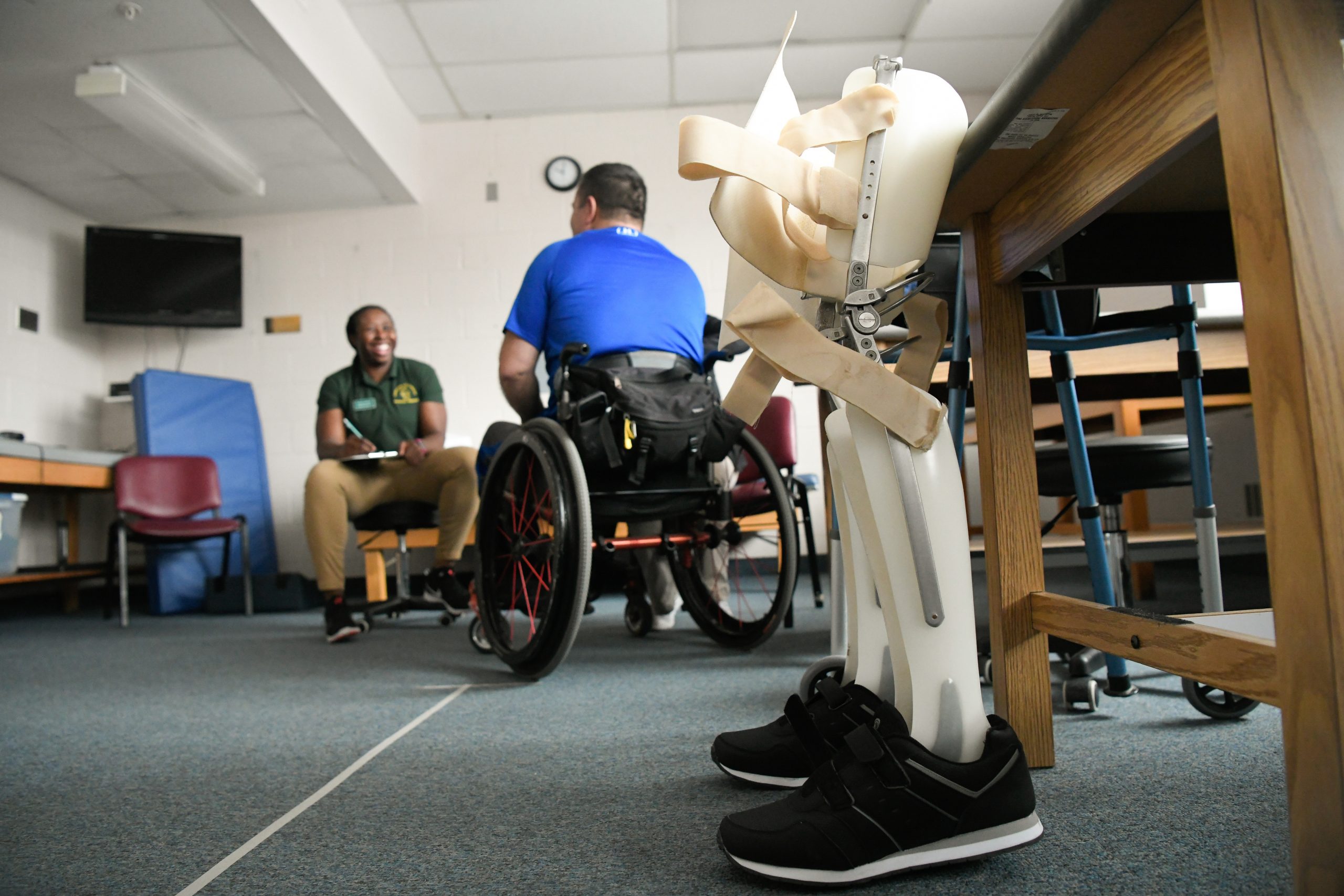Earning a doctor of physical therapy (DPT) degree can open the door to a deeply rewarding career dedicated to improving the lives of those around you. As an expert in human body movement, a physical therapist’s (PTs) role is to:
- Diagnose mobility and pain-related disorders
- Prevent disease and disability
- Prescribe exercise supported by hands-on techniques to optimize physical function
Currently ranked 15 on U.S. News and World Report’s “100 Best Jobs” list, paired with a consistently increasing job growth percentage (22 percent growth anticipated over the next eight years), the PT field offers graduates numerous opportunities in different specialties and settings.
Over the years, training to become a physical therapist has changed significantly, with programs in the U.S. no longer offering masters level degrees. Individuals looking to become a fully practicing physical therapist are now required to earn their DPT before they can become licensed or board certified.
“There are various career options in physical therapy, and we offer a wide breadth of clinical experience based on what our students are interested in,” says Dr. Jaime Bicknell, Director of Clinical Education at Clarkson. “There are opportunities in orthopedics, acute care, skilled nursing facilities and a variety of specialty areas, such as neurologic and pediatric physical therapy to name a few.”
Physical therapists work with individuals across the lifespan from infants to the elderly, and work in a variety of settings including private practice, local hospitals, nursing homes and in-home care. No matter the patient’s health condition, it is the therapist’s job to ensure they are able to engage in everyday activities pain-free.
The Value of Hands-On Clinical Experience
Unlike a research-based doctoral program, such as a PhD, the DPT is a clinical doctorate, placing significant emphasis on providing students with the hands-on experience necessary to prepare them for clinical practice and licensure. With 20 percent of the average DPT program dedicated to clinical education, it is important to know whether or not the program you select has placements available in your specific area of interest.
At Clarkson, we take a number of different factors into consideration when building our portfolio of clinical opportunities and we are dedicated to ensuring all our students find their perfect match.
“Even though our program is rural, we also offer placements in urban environments,” Bicknell says. “We work really hard to find clinical placements for our students that match their area of interest, both within the U.S. and internationally — we are always looking to build new clinical opportunities to support our students’ needs and interests.”
Starting at the end of year one, Clarkson students receive over 38 weeks of full-time clinical experience, as well as numerous other opportunities that are integrated throughout the curriculum. Individually tailored to a student’s needs, practice setting interests and geographic preferences, Clarkson offers students placement opportunities at over 500 clinical sites around the globe.
Choosing Your Learning Community
A typical DPT program can take two to three years of intensive academic and clinical work to complete, making it important to consider the community that will surround you, as they will inevitably play a key role in both your educational and future career success. Factors such as faculty-student ratios, cohort size and campus demographics can have a big influence on your development as a clinical professional.
At Clarkson, our average cohort size is 30 students with around a 3:1 student to faculty ratio. Our students work closely with faculty and their peers, developing lasting bonds and an invaluable professional network. Even in the era of COVID-19, where most didactic coursework has moved online, we’ve been able to maintain a sense of family connection. Our full-time program takes two and two-third years (8 semesters) to complete, but our graduates are trained to be lifelong learners and dynamic clinicians.
Our commitment to student success is evident in both our exam pass rates and graduate employment rates. In the last two years, one hundred percent of our graduates have passed the Federation of State Boards of Physical Therapy (FSBPT) National Physical Therapy Licensure Exam, a requirement for practicing physical therapists. Our rates exceed the national average with 88.4 percent of graduates passing on their first time. Of those program graduates responding to surveys, 100 percent who sought jobs as physical therapists were employed as physical therapists within 12 months.
Why Study Physical Therapy at Clarkson?
Clarkson’s DPT program is designed for highly-focused, motivated students who want to pursue a career in physical therapy. Our small cohort size allows us to truly provide individualized attention — so you are more than a number and you won’t get lost in the crowd. Our problem-based curricular model focuses on applying classroom knowledge to real-world scenarios, allowing our students to better understand their personal interests, and, in turn, allowing our faculty to provide the critical mentorship to support that growth.
You’ll also benefit from studying at an innovative university, with a wealth of resources and state-of-the-art technologies for clinical practice and research. Our interdisciplinary connections to the Occupational Therapy and Physicians Assistants programs enhance the standard curriculum and provide valuable insights for our students.
If our Physical Therapy Doctorate program sounds like the right fit for you, we invite you to explore our curriculum and find out more about the application process.

